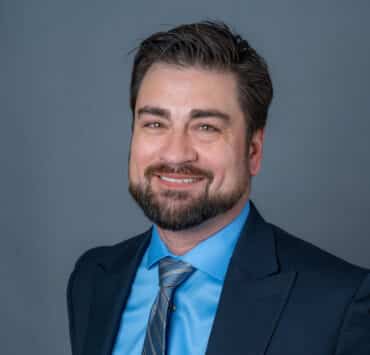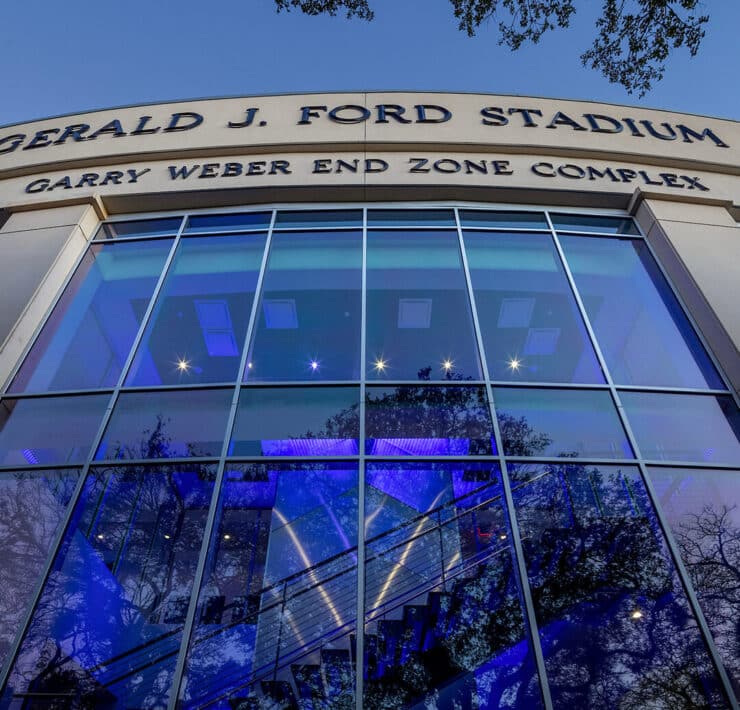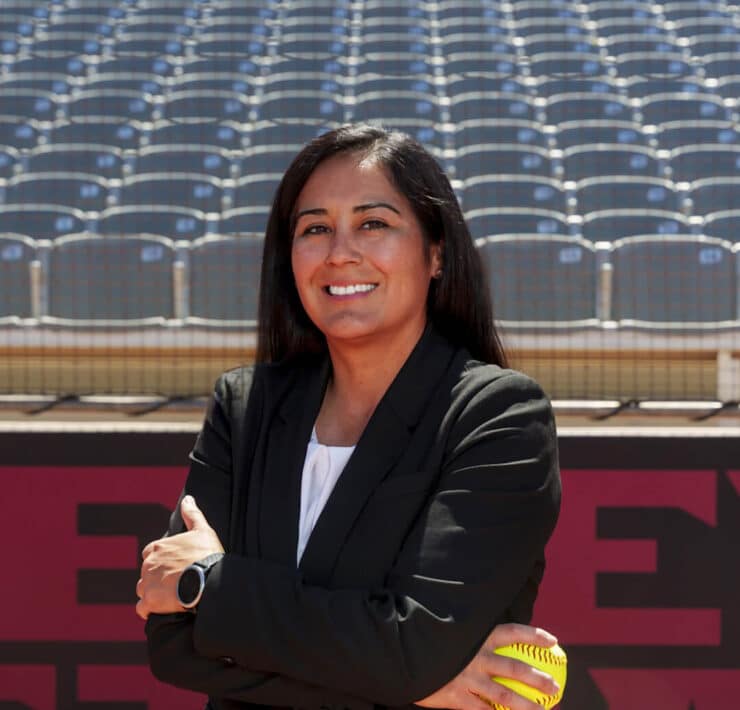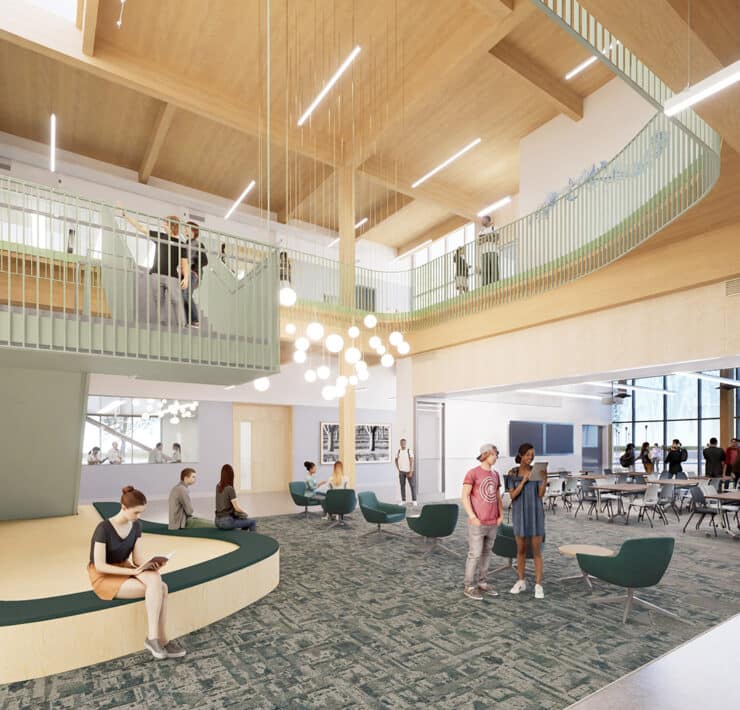
|
Getting your Trinity Audio player ready...
|
This article brought to you by Hyatt Interiors.
“We’re always knocking out walls,” says Elan Walshe, senior director of construction for Higher Ground Education (HGE).
He says this because it’s something the company does when developing a new location for HGE’s Montessori schools. The interior walls come tumbling down in renovations—about three quarters of its 130 locations are in existing structures, the remainder being new construction—but removing barriers is also a metaphor. The company is doing something with early childhood Montessori education that no one has done before. It’s breaking the paradigm by building more and building faster than any other known Montessori organization.
For good reason, the organization speaks of itself as a movement. It’s on a mission.
Montessori schools got their start in the early 20th century, the work of Italian physician Maria Montessori, and have since spread across the globe. “Montessori” is not trademarked but is used by thousands of independent and unaffiliated educational organizations. They largely adhere to this education method, which allows students to gravitate toward individual interests in lieu of more traditional teaching practices.
“It’s a requirement that everyone be able to see outside. The bottom of the window has to be at 18 inches off the ground, low enough so a two- or three-year-old can see.”
Elan Walshe
The walls that Walshe’s contractors demolish enable larger physical spaces, allowing children the freedom to seamlessly move from one activity to another. Their learning is less defined by age and regimented time blocks than what piques their curiosity. There is broad evidence and consensus among educators that the method is efficacious.
That belief translates into the movement that keeps HGE and Walshe busy. From initial meetings in 2016 that took place in founder and CEO Ray Girn’s living room to today, the company’s schools—operating under the brand, Guidepost Montessori—are primarily in the US with a handful of locations in Canada, France, Spain, and Honduras. Among them are also the first of elementary, middle, and high schools operating under the name Academy of Thought and Industry.
“We started out with the goal of building 20 schools per year,” Walshe says. “Then it became 25 a year, and now we’re looking to build 50 per year.” He explains it began with $1 million in seed money, sufficient to work with a business model where private investors own the properties and pay for the build-out. HGE signs 20-year leases that provide returns to those investors; demand for the Montessori product is strong and consistent.
Walshe mentions that unsolicited inquiries about opening new locations are received on an almost daily basis. Satisfying such extreme marketing demands that Walshe and his team have strong, reliable relationships with contractors and subcontractors, paying them in a timely manner. That then enables those contractors to have sufficient numbers of workers, which is exceptionally important in a time of labor shortages. “Our projects only move forward after capital is secured,” he says.
At the intersection of satisfied, repeat investors and properly paid contractors, Walshe’s team of construction, design, and project managers builds the kinds of facilities that support the Montessori method. The renovated locations are sometimes former daycare facilities, and other times they are retail or other purpose-built spaces. The small number of elementary, middle, and high school units have larger space needs.
What the completed Guidepost Montessori schools must have, in addition to those larger and fluid spaces, are windows.
“It’s a requirement that everyone be able to see outside,” Walshe explains. “The bottom of the window has to be at 18 inches off the ground, low enough so a two- or three-year-old can see.” These daylight features exceed the local code requirements, which are laxer in most cities. An existing location remodel can be completed in as little as nine months, but a ground-up construction averages around two-and-a-half years.
“To care is to measure.”
Elan Walshe
With strong demand for growth, Walshe says it’s entirely possible the team might accelerate expansion, both in the US and abroad, to as many as 100 schools per year. That will likely require more people and the technologies required to support them. He recognizes they’ll increasingly depend on workflow and project management software.
But, he says, the biggest driver and enabler in that growth comes from the company culture. And that culture starts at the top.
“Ray Girn is a special businessman,” Walshe says fondly. “He genuinely believes in this type of teaching and our mission to scale it up.” He also credits Guy Barnett, the company’s senior vice president of expansion. “He’s a very thoughtful person. He leads a small team accomplishing a huge volume of projects. I’ve never seen a team this size produce so much.”
The expansion team is very data-driven in how its gauge its success. “To care is to measure,” Walshe says. But those same qualities of belief in the Montessori mission are at the core of who he invites to work on the team, both internally and externally.
Their jobs might involve destroying walls. But they’re pretty good at creating windows—for the company and, especially, for the students.
Hwai Yang Architects’ qualified team of professional architects, engineers and administrative professionals successfully manage a diverse range of residential and commercial building projects in the Dallas region. They stive to add value to the local community through use of sustainable materials and dedication to maintaining the highest industry standards.
Established in 1987, Corcon has grown to become a premier builder of retail and commercial construction projects throughout the United States. We are a privately held business, built on the principles of value, customer satisfaction, integrity, and honesty. Corcon was founded by John Corso, who has built an organization that takes great pride in the level of professionalism and expertise that is brought to each and every project.







